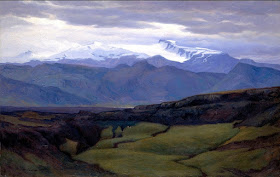JOSEPH MALLORD WILLIAM TURNER (1775-1851)
The Rigi or Rigi Kulm or Mount Rigi (1, 797m - 5,897ft)
Switzerland
1. In The blue Rigi at Sunrise, Lucerne, 1842, watercolour, Tate Britain
2. In The red Rigi at Sunrise, 1842, watercolour, Tate Britain
3. In The dark Rigi, 1842, watercolour, Tate Britain
The mountain
The Rigi (1, 797m - 5,897ft), also known as Queen of the Mountains) is a mountain massif of the Alps, located in Central Switzerland. The whole massif is almost entirely surrounded by the water of three different water bodies: Lake Lucerne, Lake Zug and Lake Lauerz. The range is in the Schwyzer Alps, and is split between the cantons of Schwyz and Lucerne, although the main summit, named Rigi Kulm, at 1,798 meters above sea level, lies within the canton of Schwyz. Technically, the Rigi is not a part of the Alps, and belongs instead to the Swiss plateau. It is mostly composed of molasse and other conglomerate, as opposed to the Bündner schist and flysch of the Alps.
The Rigi Kulm and other areas, such as the resort of Rigi Kaltbad, are served by Europe's oldest mountain railways, the Rigi Railways. Swiss Railways offer a special round-trip excursion, the “Rigi-Rundfahrt”, covering multiple segments by train, cog-railway, gondola (optional) and lake steamer. The whole area offers many activities such as skiing or sledging in the winter, and hiking in the summer.
The name Rigi is from Old High German "rîga" which means "row, stripe, furrow", after the stratification that is clearly visible on the north-side of the mountain. The name is first recorded in 1350 as Riginun. The name was interpreted as Regina montium "queen of mountains" by Albrecht von Bonstetten (1479), who however gives Rigena as alternative form.
Mt. Rigi has been featured in many works of art, including both paintings and literary publications. Perhaps the most famous paintings of the Rigi were the series by J.M.W. Turner (see above), several of which are in the collection of the Tate Britain in London.
Mark Twain also visited Rigi during his tour of Central Europe in the late 1870s, and wrote about his travels in chapter 28 of his "A Tramp Abroad."
There is a Catskills resort called the Rigi Kulm in Abraham Cahan's novel The Rise of David Levinsky (1917).
Source:
The 3 Rigi by J.M.W. Turner
Tate brings together for the first time ever three of J.M.W. Turner’s very greatest watercolour paintings: The Blue Rigi, The Dark Rigi and The Red Rigi. Turner’s groundbreaking use of watercolour, which spanned his career, culminated in the early 1840s with a series of transcendent views of Swiss lakes and mountains.
Chief among these are the three views of Mount Rigi as seen from Lake Lucerne. Each shows the mountain at a different time of day and is characterised by a defining colour or tone: dark, blue or red.The Blue Rigi was Turner's first attempt at recording the moment before dawn when the sun just perceptibly begins to chase away the cool darkness of night. Using subtly modulated washes of blue, Turner recreates the stillness and wonder of this instant, anticipating by many years the unified tonal approach to image-making of the Aesthetic Movement.
The painter
The english painter Joseph Mallord William Turner was considered a controversial figure in his day, but is now regarded as the artist who elevated landscape painting to an eminence in the history of painting. Although renowned for his oil paintings, Turner is also one of the greatest masters of British watercolour landscape painting. He is commonly known as "the painter of light" and his work is regarded as a Romantic preface to Impressionism.
In his thirties, Turner travelled widely in Europe, starting with France and Switzerland in 1802 and studying in the Louvre in Paris in the same year. He made many visits to Venice. Turner's talent was recognized early in his life....
- For More about JMW Turner Biography


























